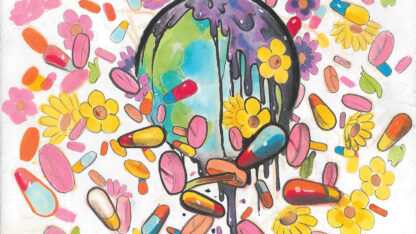Historic rises in drug overdose deaths are disproportionately affecting Black and Indigenous people in the United States.
A new analysis from the Centers for Disease Control and Prevention using data from 25 states finds that fatal overdoses increased by 44% among Black people in 2020 compared with the year prior.
The jump in drug overdose deaths was almost as sharp for American Indian and Alaska Native people — groups that together saw a 39% increase over the previous year.
The steep rise in deaths among Black and Indigenous people far outpaced what was seen among white people during the same time period. That group had a 22% year-over-year increase in drug overdoses in 2020.
Reports finds stark disparities by age and income
The CDC report points out that these differences in overdose deaths can’t be fully explained by patterns of substance use.
“The disproportionate increase in overdose death rates among Blacks and American Indian/Alaska Native people may partly be due to health inequities like unequal access to substance use treatment and treatment biases,” Dr. Debra Houry, acting principal deputy director at the CDC, told reporters on Tuesday.
Altogether, more than 91,000 people died because of drug overdoses in 2020, a historic rise of 30% compared with the year before.
While white people had the largest number of overdose deaths that year (more than 26,000 people), the rate of increase in deaths was the highest among Black and Indigenous people, a trend that has been documented in other recent studies.
The CDC analysis found that the disparities were even starker among some age groups in these populations.
Speaking to reporters at a briefing, the CDC’s Mbabazi Kariisa, the main author of the report, said, “Younger Black people, 15 to 24 years old, had the largest increase in overdose deaths — 86%.”
And the death rate among Black men 65 and older was seven times that among white men in the same age group.
The report also found that counties with the highest income inequality had the highest rates of overdose deaths, especially among racial and ethnic minority groups.
“Among Black people, overdose [death] rates in counties with the most income inequality were more than twice those of counties that had less income inequality,” said Kariisa.
Income inequality is known to have a bigger impact on the lives of minorities, she added: “This can lead to lack of stable housing, reliable transportation and health insurance, making it even more difficult for people to access treatment and other support services.”
No evidence of treatment among many who died
Kariisa and her colleagues also found that members of racial and ethnic minority groups were the least likely to have had access to treatment for substance abuse.
“The percentage with evidence of prior treatment for substance use was lowest for Black people, at 1 in 12,” said Kariisa.
Among American Indian, Alaska Native and Hispanic people, only 1 in 10 had received substance use treatment in the past, she said. “In fact, most people who died by overdose had no evidence of getting substance use treatment before their death.”
The dramatic rise in overdose deaths is largely driven by illicitly manufactured fentanyl, “including for people using other drugs like cocaine or methamphetamine who may not know they are being exposed to these potent and deadly opioids,” said Houry, referring to fentanyl contamination in illegal drugs.
Addressing fentanyl in the drug supply and historical socioeconomic inequities will be key to addressing these disparities, she added.
Houry stressed the need for wider availability of substance abuse treatment services and harm reduction measures, such as naloxone — a medication that can reverse an opioid overdose — and fentanyl test strips, which allow users to tell whether the drug they’re using contains fentanyl.
“Some prevention strategies will have more immediate benefits, while others will have longer-term and sustained effects,” she said.
Copyright 2022 NPR. To see more, visit https://www.npr.org.
9(MDAxODM0MDY4MDEyMTY4NDA3MzI3YjkzMw004))

9(MDAxODM0MDY4MDEyMTY4NDA3MzI3YjkzMw004))








